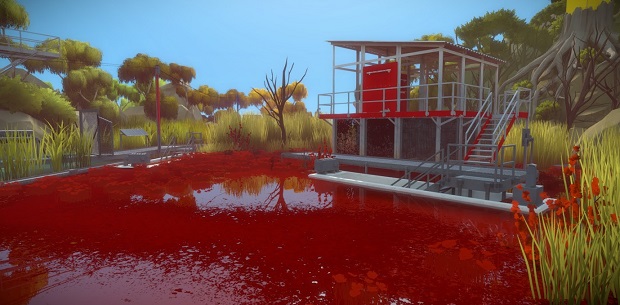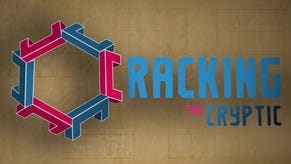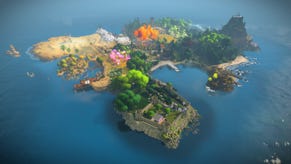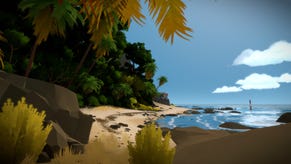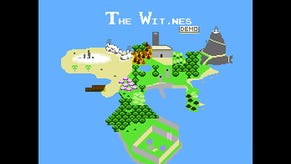Wot I Think: The Witness
WITNESS ME, BLOOD BAG
After a whopping seven years in development, Jonathan Blow’s follow-up to Braid is finally here. The Witness [official site] throws out much — though not all — of the pompousness of its predecessor to deliver a less obtuse, modernised riff on Myst. And it’s actually quite brilliant, if you can ignore its layer of self-satisfied philosophical grandiosity. Here’s wot I think.
The Witness is an uncompromising game, but also a refreshingly pure one. Where most games draw on many ideas to build a story, a world, and a set of systems by which to advance, The Witness commits to just one. It is a lightly-adventurous puzzle game designed around a singular idea - drawing an unbroken line from one point to another.
It is a game of mazes drawn upon panels and manifested in the world around you. Each maze, once completed, has some small or large effect on something else in the environment — maybe it connects the circuit to turn on another panel with another maze, maybe it opens a door, or perhaps something grander.
Some mazes, even, are made flesh. One of the highlights of the game for me is the section wherein you walk through actual hedge mazes and then draw your path on a panel at the end. It’s not quite as straightforward as it sounds. These mazes must be traversed according to certain rules (as must all mazes in The Witness) — a symbolic language, if you will, that you gradually learn as you go.
When it comes to the hedge mazes, you need to look at cues in the shadows or terrain as you move. The joy I found in the puzzles here was not the rather tedious memorisation component but the figuring out of the rules. This perhaps goes back to my childhood, when I would fashion rules for myself to follow as I looked out the car window on long trips — simple rules, like swap my gaze to the other side of the road if I see a powerline or look straight ahead if I see a red mailbox.
The Witness may be frustrating and bewildering at times, but there’s something intensely pleasurable about discovering its rules and mechanics. There are no tutorials as such. Just easy puzzles that show you how a symbol works and harder ones that test and refine your knowledge. To solve a puzzle is to engage in a kind of conversation with its maker, and here the conversations flow beautifully. Except, that is, when you come to an area that showcases the advanced form of a rule you haven’t learnt yet. The Witness does very well with signposting within each area — thanks to the cables that connect panel sections — but its open-ended world design can leave you wandering away from the areas that the mechanics you’ve learnt up to that point have equipped you to solve.
This is a double-edged sword, though. If Jonathan Blow and his team had elected to funnel progression more stringently around the game world then The Witness could very easily have lost one of its strongest elements. The game is set on a gorgeous island, which is populated only by animals you never see and a diverse cast of stone-sculpted people who appear to have been frozen in place unexpectedly some time before you arrived. Perhaps tellingly, most of them look as though they were engaged in some kind of great endeavour or conflict. But the game leaves it for you to decide the significance.
Blow employed an architect as well as a team of artists to craft this island, and it shows in the details, both tiny and grand. Each man-made creation looks a part of its surroundings, weathered and withered by the years and constructed with an apparent though not always comprehensible purpose. If The Witness had been released without the puzzles, just as a world to explore, it would have still been a fine experience. There’s just so much care in the environment — so much of a captivating sense of place and of history. It’s surreal, sure, but sometimes I found it so impressive I felt like I could almost touch it.
The obvious comparison point is Myst. As in Cyan’s old interactive-slideshow-cum-puzzle-adventure, you’re on an abandoned island that once housed a sophisticated civilisation and you wander about exploring the landscape and completing puzzles in a bid to uncover some of the mystery of the place. Like Myst, what you reveal is mostly vague and so much of the deeper meaning is left for you to decide. The Witness even has hidden videos that hint at the philosophies behind the world (though they aren’t badly acted, postage stamp-sized FMV but clips from actual real-life documentaries and interviews). And like Myst, it is, at times, utterly baffling and bewildering in design.
Take the map, for instance. The Witness has one map of the island in it. Just one. And where do you find it? In a small boat that you must call up from beneath the waves like a mighty god. It may seem a little thing for a game in which wandering is in itself pleasurable, but minor quibbles quickly turn big when you’re trying to find a particular puzzle that you think you’ve just cracked. The design attempts to mitigate this problem by making the areas distinct from each other — the orange forest stands out clearly from the green one, while the town centre is noticeably different from the keep, for instance. But the differences serve a perhaps unintended purpose: the island looks and feels like a theme park — the kind of overambitious man-made island that you might see in a movie or in an alternate reality where Walt Disney got to build everything he dreamed of.
You’ll also be hard pressed to make much sense out of the narrative. Thankfully The Witness avoids the affected storytelling of Blow’s previous Great Work — 2008 time-bending platformer Braid. Really there’s no traditional story to speak of at all. But it lays on a different sort of pretension. Wilfully-obscure snippets of other people’s philosophical musings. There are those statues and videos, which I already mentioned and which do seem to tie loosely into the world design. And then there are audio logs scattered all around the island, each of which features someone reading a long-winded quote by a famous philosopher, scientist, or religious thinker. For some, these riddling hints at a deeper meaning may be delightful; for the rest of us they vary between brief curiosities and needless fluff that distracts from the core game.
That core game, again, is excellent. While The Witness does suffer from occasional signposting problems and the odd overdesigned puzzle — where a rule gets flipped for no good reason but to baffle you — as well as frequent bouts of pretension, it’s feedback loop is something special. I found that the best moments were those in which realised that I knew how to solve the puzzle — the moment where the fact that I had to apply rules a and b in a particular way clicked in my brain. Solving the puzzle, then, was just the affirmation that I was right; I’d identified the trick.
Without spoiling any specific puzzles, I should note that the trick is almost always revealed by something near the panel. Adventure games in the Myst vein often delight in making puzzles as obscure as possible. You have to know that the designer is (or thinks they are) smarter than you before you can find a solution. But The Witness goes in the opposite direction. By putting the hints within arm’s length, it lets you feel like a genius. Its puzzles — its rules — are uncompromising, but you learn them by playing. What does that symbol mean? How do those rules interact? What happens if I do it this way instead of the other way? How do I apply the rule from the previous panels in this sequence to this one, which looks a little different and more complicated?
You converse with the game, and, if you’re patient enough to think through the logic, it teaches you its secrets.
Some puzzles took me hours of head scratching to figure out. Others took mere seconds. And many, I was happy to find, required some kind of note-taking — whether it be a sketch or a photo or some good ol’ incomprehensible pen scrawls as I tried to understand how the Tetris pieces could come together, or which dots were which colour (on a panel that sat in a room with changing lighting colours — you probably don’t want to play this game if you’re colourblind).
Only rarely does it stray into the realms of unfairness, with puzzles that break rules or puzzle sequences that punish errors (normally you can just try again if you’re wrong, but in some places you must repeat the prior puzzle first).
The Witness is one of the most fulfilling games I’ve played in yonks and it accomplishes a rare feat. It’s varied, playful, elegant, mysterious, challenging, and intensely focused all at the same time. It’s also pretentious, yes, and the ending just leaves more questions than answers — paradoxically, perhaps, given that puzzle games are all about finding answers. And it gets incredibly frustrating. But such is the price of admission to a game that speaks so vividly, so passionately, and so beautifully through its uncompromisingly, obstinately logical puzzles.
The Witness is out now for Windows and Mac.


